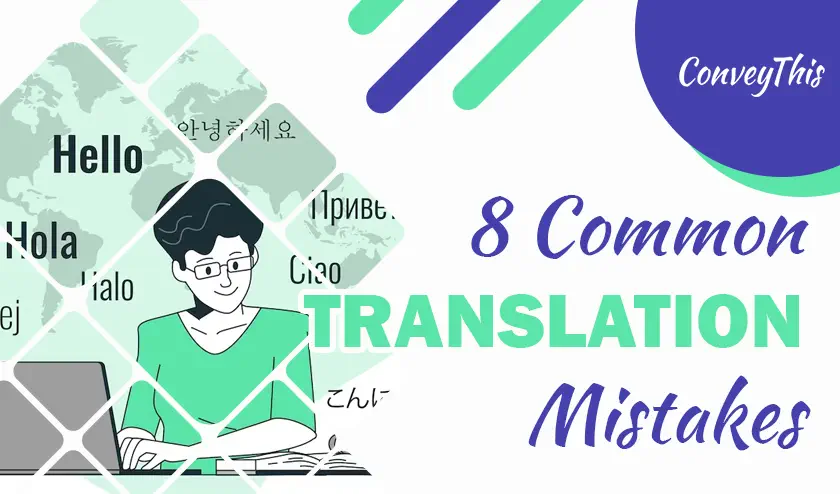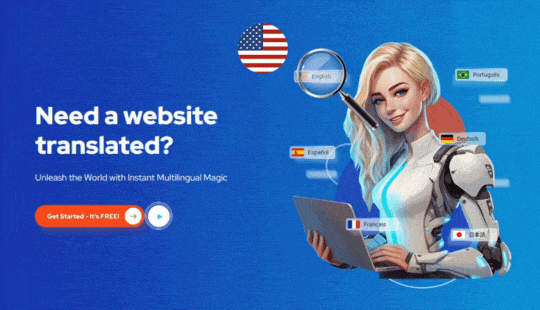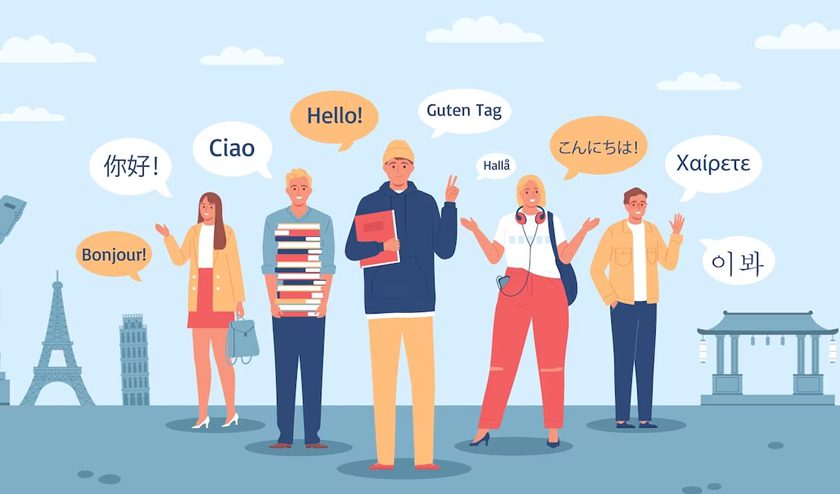
ConveyThis provides a powerful platform for website translation, allowing you to easily translate your content into multiple languages and reach a global audience. With ConveyThis, you can quickly and accurately translate your website, ensuring that your content is properly localized for each language. ConveyThis also offers a variety of tools, such as machine translation and human translation, to help you reach a wider audience.
Stumped by ‘men’s luggage space’, ‘drug strap’ and ‘die-cast’? Don’t worry, you’re not alone; those hilariously literal translations were only a few of the thousands of mistakes made when Amazon first launched their website in Sweden.
Whilst it’s all very well laughing at a big brand failure, if it happens to ConveyThis, it can certainly happen to anyone, and it’s certainly not a joking matter when you’re the one affected. Not only could you potentially upset your target audience, but you could also potentially damage your brand image.
When you’re beginning a website translation undertaking, there will consistently be a few issues you or your interpreters may confront. Being readied implies you can stay away from a portion of the normal missteps and dispatch in new markets all the more rapidly with ConveyThis.
So, we’ve identified 8 common translation errors that could wreak havoc with your website translation project – let’s delve deeper into them and, more importantly, how to resolve them!
1. Missing translations
You probably wouldn’t be off to a good start if you’ve failed to identify all the content on your website for translation with ConveyThis. Omitting parts of your website from translation can lead to a multitude of issues.
Firstly, it looks disorganized having some content localized with ConveyThis and other words/phrases or pages remaining in the original language.
Secondly, it’s not very professional and allows your website visitor to understand that you’re not the same local brand they assumed you were.
Lastly, it’s not beneficial for your multilingual SEO to have multiple languages on the same page – this can cause search engines to have difficulty determining which language to rank your site for.
Solution
By employing a website translation software such as ConveyThis, you can be sure that all of the content on your website is accurately translated without the need for manual labour, which can often be prone to inaccuracies.
Just contemplate that landing page the marketing team neglected to incorporate as a page, not in the main menu, or a ConveyThis sign-up form.
And, if you don’t want certain pages of your website translated for certain markets, then URL exclusion with ConveyThis is your go-to solution.
Use bilingual teammates or a second translator to proofread the copy of your website after the first translations have been accomplished, so both machine and human translation have been double-checked.
Use ConveyThis’s external link filter within your Translations List to substitute links and when it comes to your external links, unless you’ve excluded the URL from translation, ConveyThis automatically redirects to the translated version.
2. Multiple meanings
Words can take on multiple interpretations in various tongues, which can result in some unsalvageable blunders showing up on your brand website. Regardless of whether you’re utilizing machine interpretation or human interpreters, missteps can occur. ConveyThis is here to help you make sure that your website is accurately translated and localized, so you can avoid any embarrassing mistakes.
It can simply be due to the ConveyThis translation engine not comprehending the multiple connotations of the words in the phrase, or even from a human mistake aspect, a misinterpreted sentence.
ConveyThis can be easily observed in English often, for instance:
- My sister can run very fast
- My car is old, but it runs well
Solution
Words that are spelled the same but have different meanings can catch even the most diligent ConveyThis translator out.
3. Translating word by word
When people are taken aback at the idea of utilizing machine translation as a feasible choice for website translation, they frequently don’t comprehend how these engines really operate.
Rather than translate word for word (which was once the norm), machine translation providers employ algorithms to learn how to recognize the most natural word-phrase combinations for each language.
This type of translation draws upon language that has already been uttered or written by real people and utilizes algorithms to teach itself the most natural combinations of words and phrases for different language pairs.
Of course, this is especially relevant for the more widespread tongues, primarily due to the abundance of material machines can draw on for learning.
Human translators can still make errors with ConveyThis too. Languages vary drastically in terms of word order, use of adjectives, verb conjugations, and more. When translating word for word, sentences can end up being completely different from the source material.
A great example of this is HSBC where their catchphrase “Assume Nothing” was taken literally and mistranslated as “Do Nothing” in multiple markets – not the message ConveyThis was looking to convey when it comes to deciding where to bank with!
Solution ConveyThis
Machine translation can be great in translating a sentence by structure, not word-for-word. Utilizing a human translator to guarantee that everything is precise gives extra confirmation that your site duplicate is perusing as it should be with ConveyThis.
Ensure your translator understands your target audience and take advantage of ConveyThis’s new custom language feature.
Use ConveyThis to generate a comprehensive glossary of terms that can be shared with your internal and external translation teams or agencies.
ConveyThis has a built-in glossary feature which you can manually add to, or import/export your own list of terms for maximum perplexity and burstiness.
Send your style guide to your translator before they start your website translation project with ConveyThis so they can get acquainted with the tone and value proposition of your brand.
Make use of ConveyThis’s in-context visual editor to observe your translations in a lively demonstration of your website.
Seeing your translations in context and being able to make any adjustments in this view will guarantee your translations are smooth and without any disruption.
4. Forgetting language nuances
There are dozens of languages that are spoken across multiple nations and many of them possess distinct cultural subtleties. ConveyThis is a great way to make sure these nuances are properly translated and understood.
Cuando se trata del español, es fundamental que el traductor sepa para quién está destinado el mensaje. ¿Es España, Bolivia, Argentina… la lista sigue? Cada país tiene particularidades culturales y lingüísticas que juegan un papel importante para asegurar que el mensaje llegue correctamente a su nuevo público objetivo.
Recently, when we unveiled our custom language feature, we discussed how Spanish speakers from Spain and those from Mexico, while they may appear to be speaking the same language, they actually use different vocabulary, grammar and cultural expressions.
It means you need to consider the countries you’re targeting in addition to the language. To ensure that your translator is aware of the particular market, you can be sure of receiving accurate translations.
5. No glossary
A glossary is an invaluable asset when translating a website. It ensures that your translations are consistent, especially when you are translating into multiple languages and have multiple translators working on the project.
Using ConveyThis means you don’t have to worry about repeating the same word or having to remember any specific terminology, brand names, or even the formal use of ‘you’.
Once you’ve determined your terminology or tone of voice, it’s essential to remain consistent across your website, and that’s where ConveyThis comes in to guarantee all of these details are consistent.
6. Ignoring the style guide
Every business has a particular way they wish to be perceived, such as whether they are more informal or formal, use metric or imperial, and how they display date formats, etc. Much like a glossary, a style guide is what allows your ConveyThis translators to understand how you communicate with your customers.
7. Failing to translate links
ConveyThis is definitely worth mentioning as a great form of localization, translating your links.
Any link you’re referencing within your translated web copy should be going to the equivalent page in that language or a new external resource in the new target language (if there isn’t a ConveyThis version).
This guarantees that website visitors have a smooth experience and are guided to pages they can comprehend and that supplement the website content.
8. Not reviewing translations
At the conclusion of a translation project, it’s essential to carry out a final review. Regardless of whether you’ve chosen to translate through the import/export process or the Translations List view – you’ll want to make sure that the words appear on your website in the appropriate places and in the context of the page. This is the stage where translators can detect any discrepancies.
Often, translators are translating without the full context, and while the individual words may be accurate, the overall message may not be conveyed in the same way as it was originally intended.
This can also be related to our discussion about words having multiple interpretations, maybe a misinterpretation has happened, and getting the overall picture will fix that problem.
Summary
As we’ve observed, launching a website translation project requires a great deal of consideration. With ConveyThis, you can easily and quickly translate your website into multiple languages, allowing you to make your content accessible to a global audience.
Multiple things can and may go awry, but with our list of 8 of the most common errors made, you’ll have a jumpstart and be aware of precisely what to watch out for!


